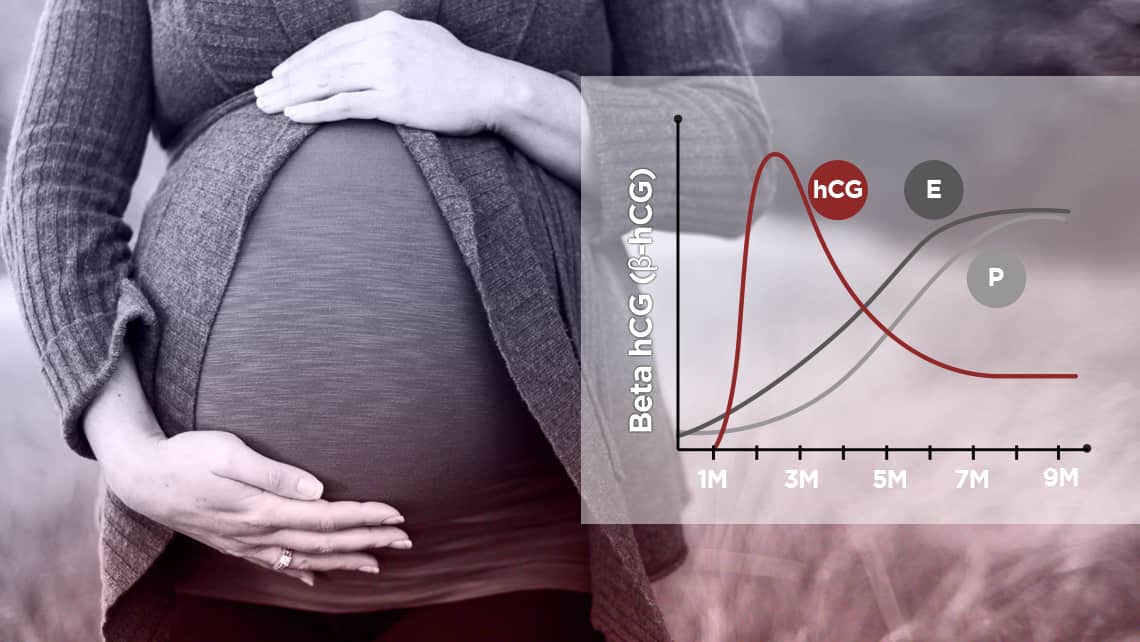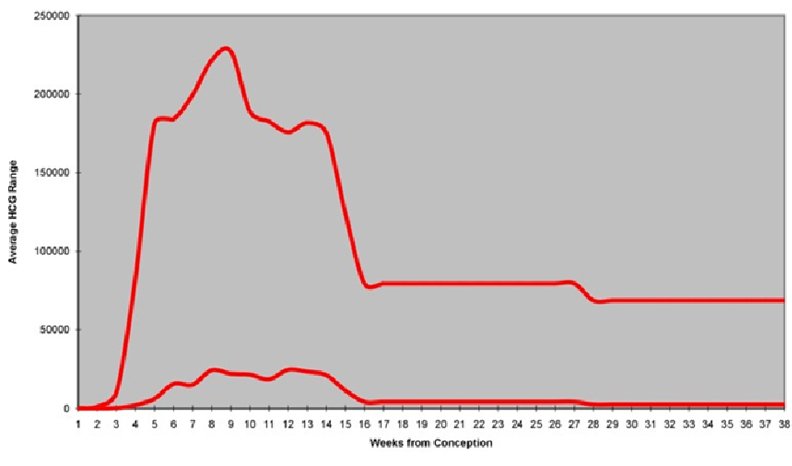
Beta hCG (β-hCG) result table
ACCESS INFORMATION PRIOR TO THIS POST ON BETA
β-hCG (human chorionic gonadotropin) is a glycoprotein that is initially secreted by trophoblast cells in the embryo shortly after it implants in the uterus. The rapid increase in serum levels of hCG following conception means it is an excellent early indicator of pregnancy. It’s also a parameter which is widely used for monitoring that a pregnancy is progressing correctly.
On a physiological level, hCG triggers the corpus luteum and thus facilitates progesterone and oestrogen synthesis. Progesterone stimulates the maturing of blood and capillary vessels that help the foetus to develop correctly.
hCG levels can be measured in blood or in urine.
Urine tests have a detection limit of 20 to 100 mUI/ml depending on the brand. If the measurement is to be taken in urine, a sample of the first urine of the day is recommended. This is particularly true during the early days of pregnancy because, if the urine is too diluted, the test can return incorrect negative results.
hCG levels in blood can be used to detect levels as low as 5 mUI/ml and the concentration levels of the hormone can therefore be calculated.
hCG levels in multiple pregnancies are 30-50 % higher than in pregnancies where there is only one foetus. However, a multiple pregnancy should be confirmed by means of an ultrasound.
As well as confirming pregnancy, it is also used in follow-up procedures after pregnancy loss and in the diagnosis and following-up of ectpoic pregnancies (in such cases, 1500 mUI/ml hCG levels can be found when no embryo has been found in the uterus using ultrasound scans).

High levels of hCG may also be detected in cases of gestational trophoblastic diseases such as hydatiform moles (‘molar pregnancy’) or choriocarcinoma, as well as in certain types of tumours.
Serum hCG levels increase from conception up until weeks 12 to 14 and then progressively decrease. This increase in hCG levels during the first few months of pregnancy is what causes the nausea which some women experience.
Below, you will find a table indicating hCG levels during each stage of pregnancy (for single foetus pregnancies). There are only a guide and there is no direct connection between a single foetus pregnancy and a twin pregnancy.
| Weeks since last period | Approximate range (mIU/mL) |
| 3-4 | 9 – 130 |
| 4-5 | 75 – 2600 |
| 5-6 | 850 – 20800 |
| 6-7 | 4000 – 100200 |
| 7-12 | 11500 – 289000 |
| 12- 16 | 18300 – 137000 |
| 16 – 19 (2º trimestre) | 1400 – 53000 |
| 19 – 41 (3º trimestre) | 940 – 60000 |
Dr Ana Fabregat, pharmacist at Instituto Bernabeu.
